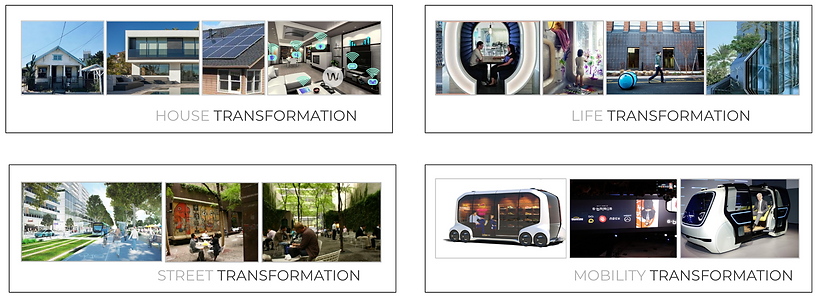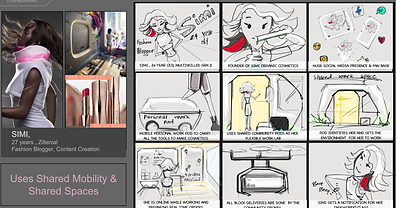Pallavi Gautam
Designing mobility experience for the dynamic needs.

Transforming 'Typical' residential blocks into efficient, accessible and desirable places that prioritize 'human' spaces for pedestrianism and interaction.
WHY DO WE SEE ONLY CARS AND NO PEOPLE ON THE STREETS OF LOS ANGELES?
WHAT WILL HAPPEN TO THE RESIDENTIAL STREETS IN 2035?

CONCERN

DESIGN RESEARCH METHODS:

Secondary Research :
STEEP
SOCIAL
TECHNOLOGICAL
ECONOMICAL
ENVIRONMENTAL
POLITICAL
Ethnography & Primary Research :
Site Study: Exposition park, Chinatown, Skid row
Key Interviews: LA Residents, LA City Council, LA Mayor's team
Insights: ADU's initiative, NIMBYism, Unaffordability
Approach:
INVESTIGATE THE EFFECT OF DENSITY DUE TO ADU TYPE INITIATIVE.




This project investigates a more resilient, distributed, and human residential network that will help urban designers & city planners cater to increased density and ongoing lifestyle and mobility shifts. It attempts to make a “typical” residential block into efficient, accessible, and desirable place that prioritize “human” spaces for pedestrianism and interaction.

VISION 2035

SPACE & DENSITY STUDY


2 BLOCKS:
56 SINGLE FAMILY HOMES.
EACH HOUSE HAS AT LEAST 2 CARS WHICH MAKES IT 112 CARS FOR 56 HOUSES.
This diagram shows the density of 56 cars in 2 blocks.
WHAT HAPPENS TO COMMUTING IN A DENSER GRID?
SPACE STUDY



REDESIGNING THE SPACE PROMOTING PEDESTRIANISM



GIVE STREETS BACK TO PEOPLE & PROPOSE NEW MOBILITY SOLUTIONS


Different mobility solutions that fits in a residential block, from a personal to shared to mobile kiosks.
PERSONA DEVELOPMENT
&
USER JOURNEY



CONCEPT DEVELOPMENT





VR EXPERIENCE
